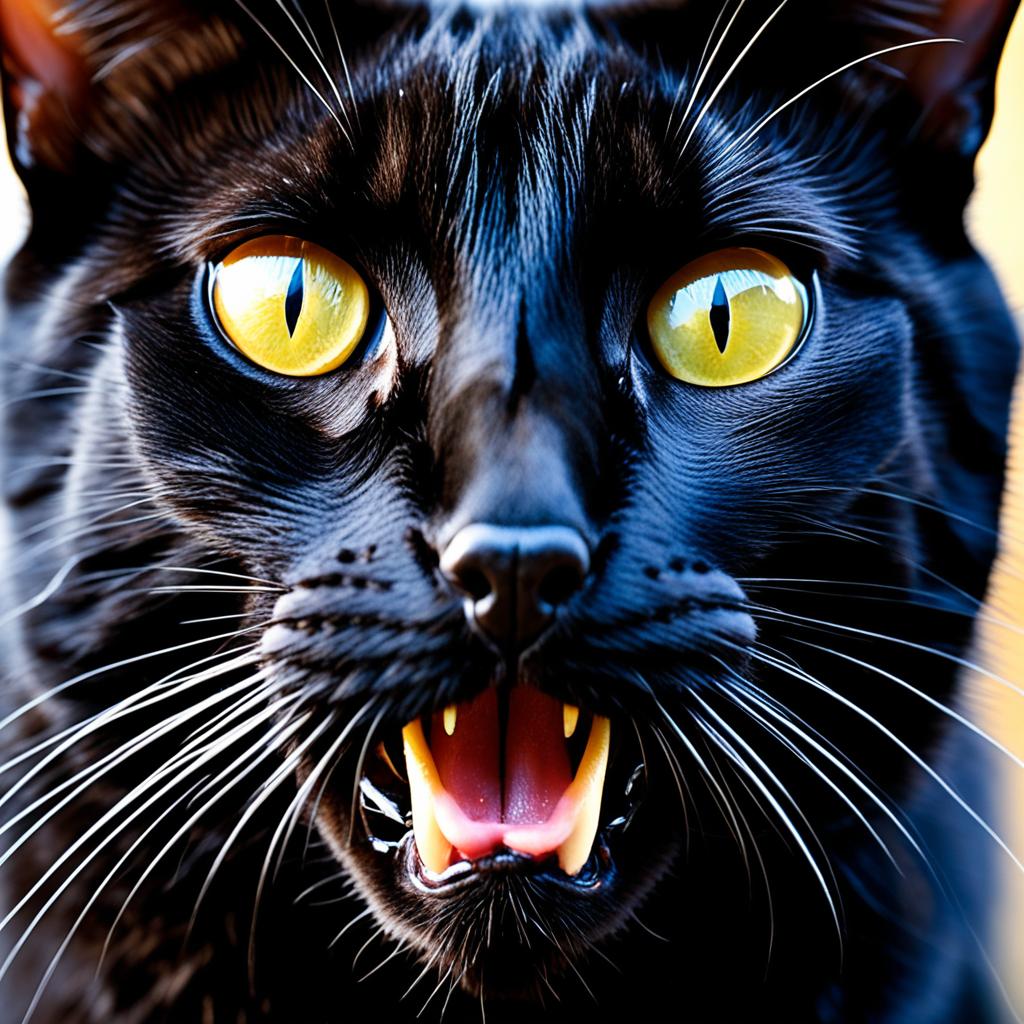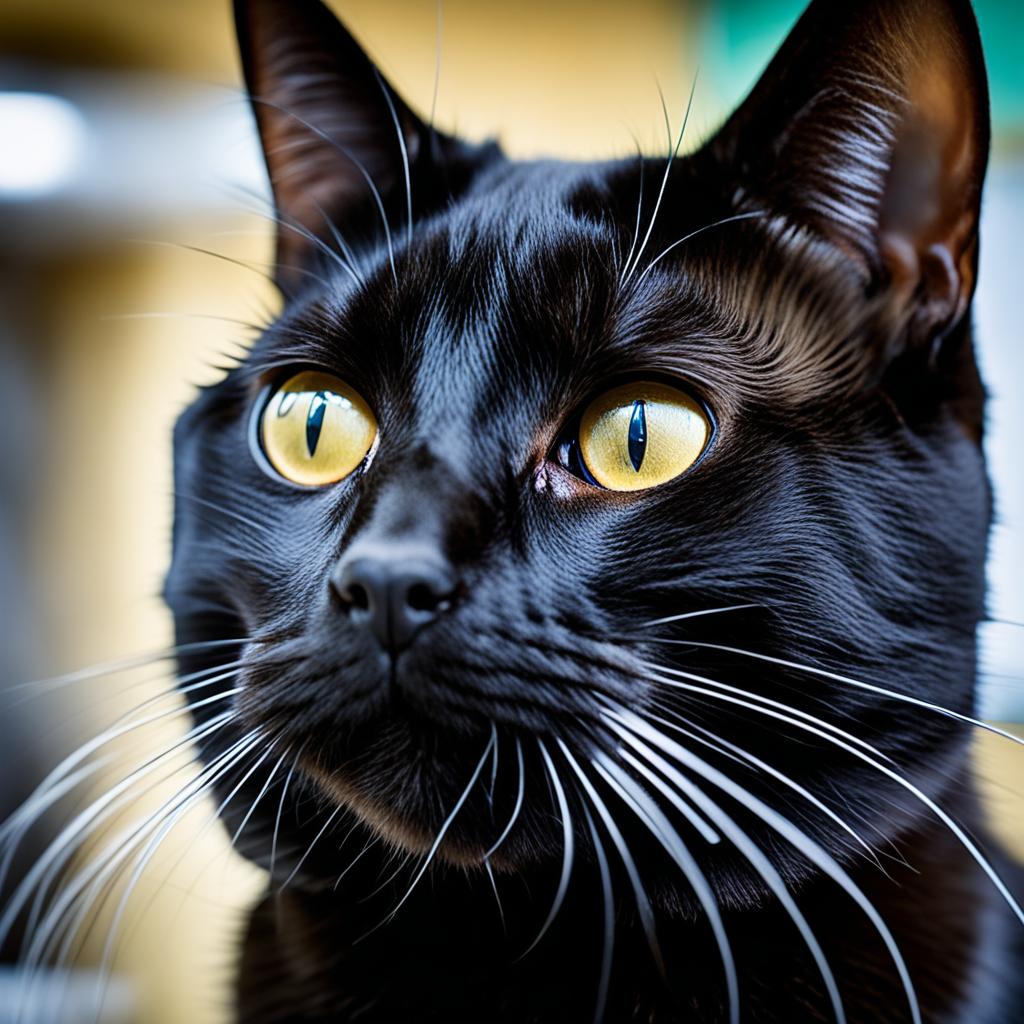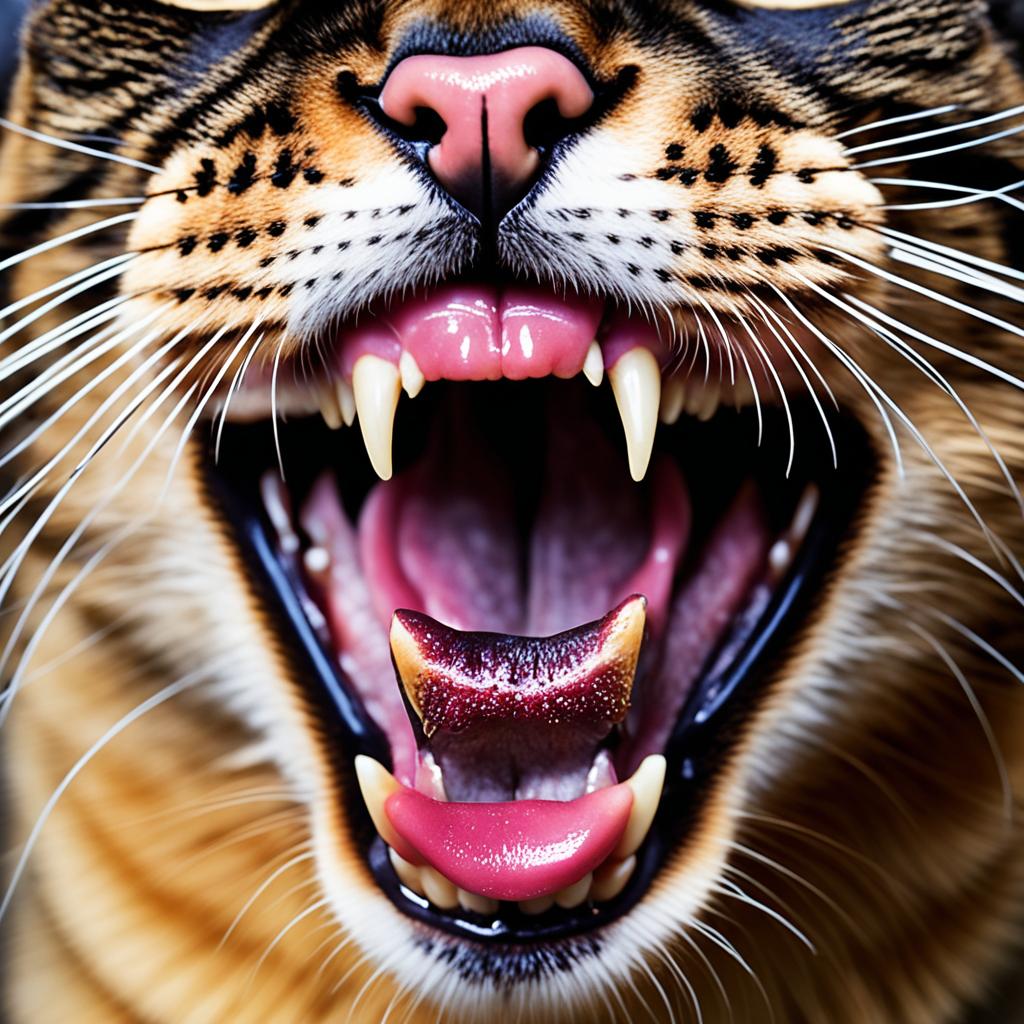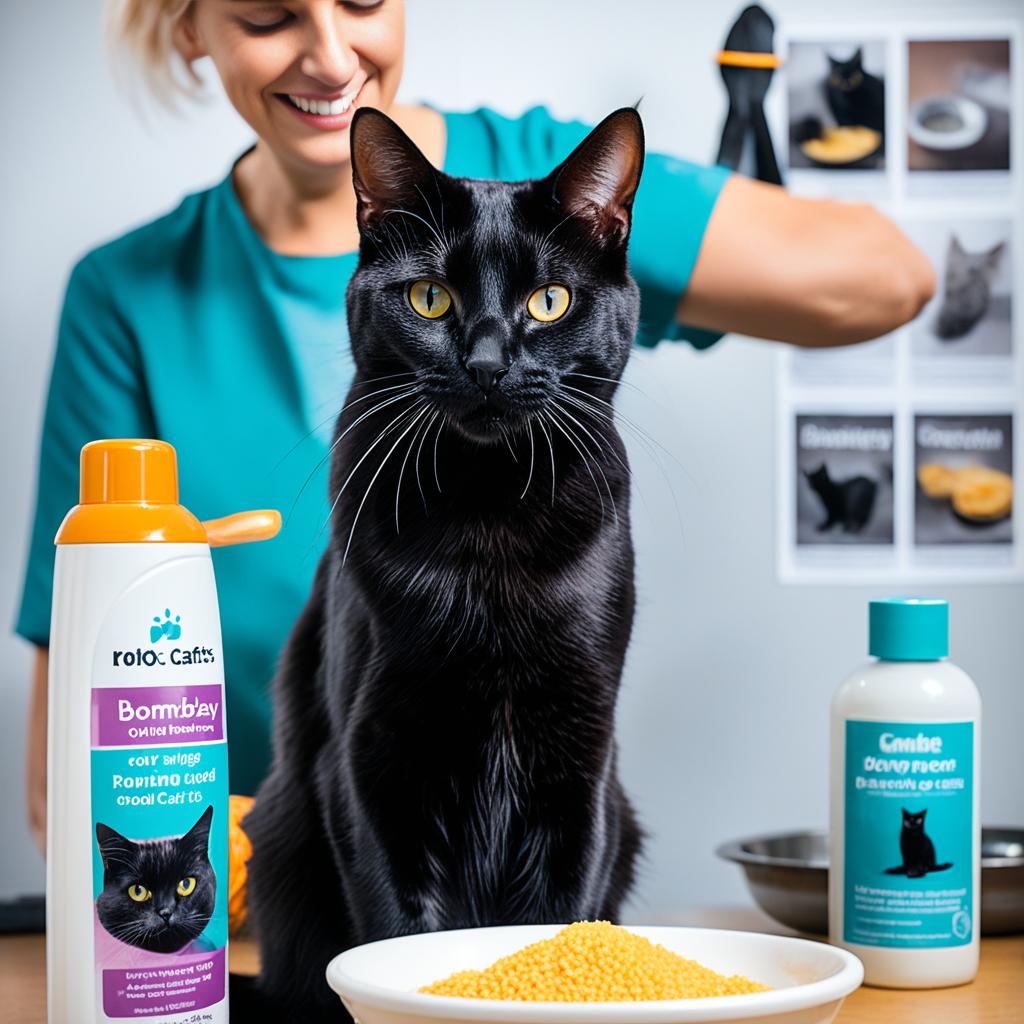Have you ever wondered why your Bombay Cat seems to turn into a feline faucet at the most unexpected times?
Drooling in cats can be puzzling, especially when you’re trying to figure out if it’s a quirky behavior or a red flag for something more serious. While occasional vomiting and regurgitation, accompanied by drooling, are not uncommon in healthy cats, consistent issues might hint at bigger problems. Are furballs, rapid eating, or dietary indiscretions to blame, or could it be something more severe like foreign body ingestion, toxins, diseases, or even cancer?
Understanding why your furry friend engages in excessive drooling is not just about maintaining cleanliness—it’s crucial for their health and your peace of mind. Whether it’s a benign behavior or a medical emergency, learning to identify the causes of your Bombay Cat’s drooling can make all the difference.
Key Takeaways
- Differentiating between normal and concerning Bombay Cat drooling behavior is essential.
- Short-term vomiting and regurgitation often present with drooling in healthy cats.
- Factors like furballs, rapid eating, and dietary indiscretions can lead to drooling.
- Serious health concerns include foreign body ingestion, toxins, diseases, and cancer.
- Understanding cat health is vital for addressing Bombay Cat drooling causes.
Introduction to Bombay Cat Drooling

Drooling in Bombay Cats can come across as a peculiar trait, but it’s a behavior that warrants understanding. General causes of drooling in cats range from something as simple as relaxation to more concerning health issues that may require attention. By learning about the basics of drooling and its common triggers, cat owners can begin to decipher their cat’s drool patterns and take appropriate steps when necessary.
What is Drooling?
At its core, drooling is the involuntary release of saliva from a cat’s mouth. It’s a common feline behavior, yet understanding its implications is crucial for addressing any underlying issues. Observing when your Bombay Cat indulges in this slobbery act can be the first step toward maintaining optimal feline oral health. Excessive drooling might seem cute sometimes, but it often signals something deeper.
General Drooling Causes in Cats
The causes of drooling in Bombay Cats can be diverse. It’s essential to distinguish between harmless drooling and instances that scream for medical intervention. Some everyday triggers include:
- Relaxation: Cats may drool while being petted or simply when they’re content and relaxed.
- Oral Health Issues: Problems like dental disease or mouth injuries can lead to Bombay Cat excessive drooling.
- Nausea: Gastrointestinal issues or the ingestion of something toxic might necessitate a thorough Bombay Cat drool treatment.
- Medications or Treatments: Some medicines might cause drooling as a side effect.
Why Does My Bombay Cat Drool?

Curious why your Bombay Cat might be drooling? You’re not alone. The answer isn’t always straightforward. Let’s unravel the causes behind this peculiar behavior, both health-related and behavioral.
Potential Health Concerns
At the forefront of Bombay Cat drool health concerns are dental problems. Cats with periodontal disease, gingivitis, or oral infections might drool more than usual. Proper cat oral hygiene can prevent many of these issues. Moreover, gastrointestinal diseases, such as inflammatory bowel disease or ingestion of toxins, can also cause drooling. Monitoring your cat’s appetite, weight, and stool can provide clues to these health concerns.
Behavioral Reasons
Behavioral aspects could be the culprit behind your cat’s drooling. Some cats drool out of sheer contentment—think happy kneading sessions. On the flip side, stress and anxiety might lead to excessive drooling. Identifying stressors, whether it’s a new pet, changes in routine, or loud noises, is crucial. Implementing Bombay Cat drool remedies aimed at reducing stress, such as providing safe spaces and consistent routines, can often help.
Here’s a quick overview of potential health and behavioral drooling causes in Bombay Cats:
| Health Concerns | Behavioral Reasons |
|---|---|
|
|
Common Causes of Excessive Drooling in Bombay Cats

Dealing with drooling in your Bombay Cat can be perplexing! Understanding the underlying causes is essential for effective management and prevention. Let’s dive into some common reasons behind your cat’s drooling.
Health Issues
Excessive drooling can often be linked to health problems. Serious conditions like feline oral diseases, kidney or liver disease can all cause your Bombay Cat to salivate more than usual. Vigilance in observing symptoms is crucial to ensuring timely medical attention.
Behavioral Causes
Stress-related cat drooling is fairly common, especially in sensitive breeds like the Bombay Cat. Situations that cause anxiety or separation issues can lead to excessive drooling as a stress response. Understanding your cat’s triggers can help mitigate this behavior.
Environmental Factors
Exposure to irritants present in household items or certain plants can cause your cat to drool excessively. Cat dietary indiscretion, such as consuming non-food items, also leads to increased drool. Ensuring a safe environment helps in controlling these factors.
Bombay Cat Drool Remedies

Dealing with a drooling Bombay Cat? Look no further; we’ve got the purrfect solutions for you! Whether it’s addressing health issues, making behavioral adjustments, or creating a cat-friendly environment, you’ll find the remedies you need.
Health-Related Treatments
When it comes to treating feline drooling, health-related interventions are often the first step. These can range from routine dental care to using anti-nausea medications prescribed by your vet. A thorough dental check-up can often reveal underlying problems such as gum disease or oral infections, which, when treated, can significantly reduce drooling.
Behavioral Adjustments
Sometimes, your cat’s drooling can be linked to behavioral issues. Addressing this may involve modifying your cat’s surroundings to alleviate stress triggers. For example, providing a calm, secure environment and ensuring your pet has plenty of enrichment activities can be incredibly beneficial. The goal here is Bombay Cat drool prevention by reducing anxiety-driven behaviors that can lead to excessive drooling.
Environmental Changes
Lastly, creating a safe living space is crucial. Removing potential toxins and irritants from your cat’s environment not only promotes health but also prevents unnecessary drooling. Ensure that household plants and chemicals are kept out of reach. By creating a cat-friendly environment, you’ll minimize stressors and hazards that might cause drooling in your feline friend.
Understanding Your Cat’s Drool Behavior

Decoding cat behavior can sometimes feel like you’re piecing together a feline jigsaw puzzle, especially when it comes to drooling. It’s essential to observe the specific contexts in which your cat’s drooling occurs.
Maybe your Bombay Cat drools while you’re showering them with strokes behind the ears—could it be pure bliss? Or perhaps you’ve noticed it after their meal, hinting at satisfaction or something more concerning. Interpreting drool patterns in cats requires attention to these subtleties.
Consider keeping a drool diary. Track when the drooling happens to see if there’s a pattern. Here’s a handy table to help organize your observations:
| Context | Frequency | Potential Interpretation |
|---|---|---|
| During sleep | Occasional | Relaxation, contentment |
| While being petted | Frequent | Affection, pleasure |
| After eating | Frequent | Possibly dental issues, satisfaction |
| Random times | Sporadic | Health concerns |
By decoding cat behavior and interpreting drool patterns in cats, you can discern whether your Bombay Cat’s drooling is nothing more than a sign of contentedness or if it’s time for a vet visit.
Preventing Drooling in Bombay Cats

Preventing drooling in Bombay Cats requires a holistic approach, focusing both on physical health and mental well-being. This strategy ensures your furry companion remains in optimal condition, minimizing any potential drooling issues right from the start.
Regular Health Checkups
Your first line of defense in maintaining cat health maintenance is through regular veterinary health checkups. By scheduling routine visits, your vet can catch dental issues or other health concerns early, ensuring any minor problems don’t escalate into major ones. Regular teeth cleaning, vaccinations, and comprehensive exams are just a few elements of an effective care routine for your Bombay Cat.
Maintaining Stress-Free Environment
Creating a stress-free environment is crucial for stress reduction in cats. Ensure your Bombay Cat has a predictable routine, safe spaces to retreat to, and ample enrichment activities to keep them mentally stimulated and anxiety-free. Simple changes like adding scratching posts, toys, and cozy resting spots can significantly enhance your cat’s quality of life and prevent stress-induced drooling behaviors.
Medical Conditions Linked to Drooling

Recognizing drooling in your Bombay Cat can sometimes be tricky, but shedding light on the medical conditions linked to this behavior can guide you in the right direction. Early identification of health issues will not only put your mind at ease but also ensure your feline’s well-being.
Dental Problems
One of the primary culprits behind your cat’s drooling could be dental issues. Tooth decay, gingivitis, and oral infections are not to be ignored. Regular checkups focusing on cat dental health can preemptively address these problems, preventing severe complications later on. Look out for red gums, bad breath, or difficulty eating—all signs that a dental vet visit may be overdue.
Gastrointestinal Diseases
Another area to watch is gastrointestinal health. Diseases impacting the digestive tract can incite drooling as the body’s response to internal distress. Recognizing early symptoms of feline gastrointestinal care issues, such as inconsistent bowel movements or frequent vomiting, can lead to timely interventions. Diet adjustments or medical treatments might be necessary to keep those gastrointestinal problems at bay.
Toxins and Poisons
Let’s not forget the hidden dangers lurking in your home. Various substances can be toxic to your cat, causing significant distress and excessive drooling. Pay close attention to recognizing cat poisoning—whether it’s from ingesting houseplants like lilies or exposure to household chemicals. Immediately remove any suspected culprits and consult your vet for emergency care to prevent long-term harm.
When to Visit the Vet
Knowing the appropriate time to head to the vet can make a significant difference for your Bombay Cat’s health. While occasional drooling might not raise alarms, persistent issues coupled with other symptoms should not be ignored. Recognizing the signs of severe drooling and understanding when it indicates an emergency can be crucial for your cat’s well-being.
Signs of Severe Drooling
Not all drooling is created equal. Look out for severe signs like uncontrollable slobbering, especially if it’s accompanied by lethargy, loss of appetite, or vomiting. Such symptoms often point towards deeper health concerns and merit essential vet visits for cats. If you notice your feline friend consistently showing these signs, it’s time to consult with your veterinarian.
Emergency Symptoms
Emergency cat care becomes imperative when drooling is associated with symptoms like difficulty breathing, swollen mouth, or bloody drool. These indicators might reveal exposure to toxins, severe infections, or other urgent health issues. Immediate attention ensures your Bombay Cat receives the necessary intervention to prevent more serious complications.
Preparing for the Vet Visit
A well-prepared visit to the vet can smoothen the process and ensure your cat gets the best care possible. Before heading out, gather essential information about your cat’s behavior patterns, diet changes, and recent incidents of excessive drooling. Having this information handy can aid in the vet’s assessment, leading to accurate and timely treatment. Regular Bombay Cat health monitoring equips you to act swiftly and effectively when your feline needs help.




